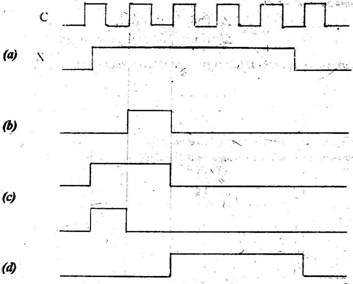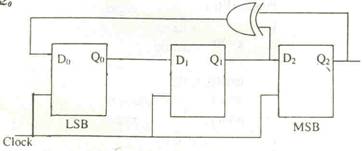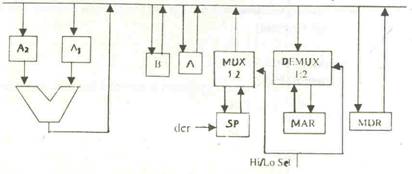GATE CSE paper
Printed From: One Stop GATE
Category: GATE Previous Years Test Papers - Discuss Here
Forum Name: CS Papers
Forum Discription: Computer Science Previous Year GATE Papers to can discussed here.
URL: http://forum.onestopgate.com/forum_posts.asp?TID=77
Printed Date: 19Feb2025 at 7:51pm
Topic: GATE CSE paper
Posted By: Priya
Subject: GATE CSE paper
Date Posted: 05Jan2007 at 5:36pm
|
2.1 How many 4-digit even numbers have all 4 digits distinct? (a) 2240 (b) 2296 (c) 2620 (d) 4536
2.2 Consider the following statements: S1 : There exist infinite sets A, B, C such that A Ç (B È C) is finite. S2: There exist two irrational numbers x and y such that (x +y) is rational. Which of the following is true about S1 and S2 ?
2.3 Let f : A ® B be a function, and let E and F be subsets of A. Consider the following statements about images. S1 :f (E È F)=f (E) È f (F) S2 :f (E Ç F)=f(E) Ç f (F) Which of the following is true about S1 and S2 ?
2.4 Seven (distinct) car accidents occurred in a week. What is the probability that they all occurred on the same day?
2.5 Consider a DFA over S = {a, b} accepting all strings which have number of a's divisible by 6 and number of b's divisible by 8. What is the minimum number of states that the DFA will have?
L1={w w l w Î {a,b}*} L2={ww R | w Î {a, b}*, w R is the reverse of w} L3 = { 0 2i | i is an integer} L4 = {O i2| i is an integer} Which of the languages are regular?
2.7 Consider the following problem X . Given a Turing machine M over the input alphabet å , any state q of M and a word W Î S *, does the computation of M on w visit the state q ? Which of the following statements about X is correct?
2.8 Consider the following circuit with initial state Q o = Q 1 = 0. The D Flip-Flops are positive edge triggered and have set up times 20 nanosecond and hold times 0.
Consider the following timing diagrams of X and C; the clock period of C ³ 40 nanosecond. Which one is the correct plot of Y?
2.9 Which is the most appropriate match for the items in the first column with the items in the second column ? X Indirect Addressing I. Array implementation Y Indexed Addressing II. Writing relocatable code Z. Base Register Addressing III. Passing array as parameter
2.10 The 2's complement representation of (-539) 10 in hexadecimal is
Which of the following is true?
2.12 Consider the circuit given below with initial state Q 0 = 1, Q 1 = Q 2 = O. The state of the circuit is given by the value 4Q 2 + 2Q 1 +Q 0
Which one of the following is the correct state sequence of the circuit? (a) 1,3,4,6,7,5,2 (b) 1,2,5,3,7,6,4 (c) 1,2,7,3,5,6,4 (d) 1,6,5,7,2,3,4.
2.13 Consider the following data path of a simple non-pipelined CPU. The registers A, B, A 1, A 2, MDR, the bus and the ALU are 8-bit wide. SP and MAR are 16-bit registers. The MUX is of size 8 x (2:1) and the DEMUX is of size 8 x (1: 2). Each memory operation takes 2 CPU clock cycles and uses MAR (Memory Address Register) and MDR(Memory Date Register). SP can be decremented locally.
The CPU instruction "push r". where = A or B, has the specification M[SP] ¬ r SP ¬ SP-l How many CPU clock cycles are needed to execute the "push r" instruction?
2.14 Consider an undirected unweighted graph G. Let a breadth-first traversal of G be done starting from a node r. Let d(r, u) and d(r, v) be the lengths of the shortest paths from r to u and v respectively, in G. lf u is visited before v during the breadth-first traversal, which of the following statements is correct?
------------- For More Sample Papers Visit: http://onestopgate.com/gate-preparation/ - http://onestopgate.com/gate-preparation/ |




